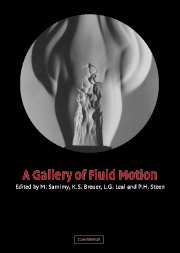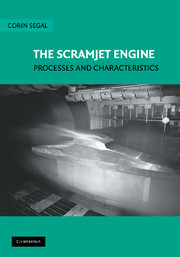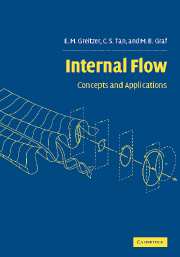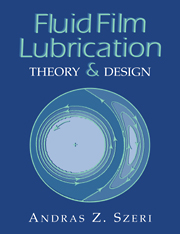Refine search
Actions for selected content:
5486 results in Thermal-fluids engineering
1 - Introduction
- from Part I - A grammar of turbulence
-
- Book:
- Turbulence in the Atmosphere
- Published online:
- 11 April 2011
- Print publication:
- 28 January 2010, pp 3-26
-
- Chapter
- Export citation
Part III - Statistical representation of turbulence
-
- Book:
- Turbulence in the Atmosphere
- Published online:
- 11 April 2011
- Print publication:
- 28 January 2010, pp 295-296
-
- Chapter
- Export citation
4 - Turbulent fluxes
- from Part I - A grammar of turbulence
-
- Book:
- Turbulence in the Atmosphere
- Published online:
- 11 April 2011
- Print publication:
- 28 January 2010, pp 75-88
-
- Chapter
- Export citation
15 - Covariances, autocorrelations, and spectra
- from Part III - Statistical representation of turbulence
-
- Book:
- Turbulence in the Atmosphere
- Published online:
- 11 April 2011
- Print publication:
- 28 January 2010, pp 331-360
-
- Chapter
- Export citation
5 - Conservation equations for covariances
- from Part I - A grammar of turbulence
-
- Book:
- Turbulence in the Atmosphere
- Published online:
- 11 April 2011
- Print publication:
- 28 January 2010, pp 89-114
-
- Chapter
- Export citation
7 - Kolmogorov scaling, its extensions, and two-dimensional turbulence
- from Part I - A grammar of turbulence
-
- Book:
- Turbulence in the Atmosphere
- Published online:
- 11 April 2011
- Print publication:
- 28 January 2010, pp 145-172
-
- Chapter
- Export citation
2 - Getting to know turbulence
- from Part I - A grammar of turbulence
-
- Book:
- Turbulence in the Atmosphere
- Published online:
- 11 April 2011
- Print publication:
- 28 January 2010, pp 27-54
-
- Chapter
- Export citation
12 - The stable boundary layer
- from Part II - Turbulence in the atmospheric boundary layer
-
- Book:
- Turbulence in the Atmosphere
- Published online:
- 11 April 2011
- Print publication:
- 28 January 2010, pp 267-294
-
- Chapter
- Export citation

A Gallery of Fluid Motion
-
- Published online:
- 25 January 2010
- Print publication:
- 12 January 2004

The Scramjet Engine
- Processes and Characteristics
-
- Published online:
- 19 January 2010
- Print publication:
- 22 June 2009

Computational Fluid Dynamics
-
- Published online:
- 15 January 2010
- Print publication:
- 07 February 2002

Internal Flow
- Concepts and Applications
-
- Published online:
- 14 January 2010
- Print publication:
- 29 April 2004

Fluid Film Lubrication
- Theory and Design
-
- Published online:
- 12 January 2010
- Print publication:
- 13 November 1998
9 - Spray Applications
-
- Book:
- Fluid Dynamics and Transport of Droplets and Sprays
- Published online:
- 05 June 2012
- Print publication:
- 11 January 2010, pp 285-313
-
- Chapter
- Export citation
Preface
-
- Book:
- Fluid Dynamics and Transport of Droplets and Sprays
- Published online:
- 05 June 2012
- Print publication:
- 11 January 2010, pp xi-xiii
-
- Chapter
- Export citation
4 - Multicomponent-Liquid Droplets
-
- Book:
- Fluid Dynamics and Transport of Droplets and Sprays
- Published online:
- 05 June 2012
- Print publication:
- 11 January 2010, pp 90-133
-
- Chapter
- Export citation
Contents
-
- Book:
- Fluid Dynamics and Transport of Droplets and Sprays
- Published online:
- 05 June 2012
- Print publication:
- 11 January 2010, pp vii-x
-
- Chapter
- Export citation
Frontmatter
-
- Book:
- Fluid Dynamics and Transport of Droplets and Sprays
- Published online:
- 05 June 2012
- Print publication:
- 11 January 2010, pp i-vi
-
- Chapter
- Export citation
Appendix B - Conserved Scalars
-
- Book:
- Fluid Dynamics and Transport of Droplets and Sprays
- Published online:
- 05 June 2012
- Print publication:
- 11 January 2010, pp 415-421
-
- Chapter
- Export citation
2 - Isolated Spherically Symmetric Droplet Vaporization and Heating
-
- Book:
- Fluid Dynamics and Transport of Droplets and Sprays
- Published online:
- 05 June 2012
- Print publication:
- 11 January 2010, pp 8-29
-
- Chapter
- Export citation
